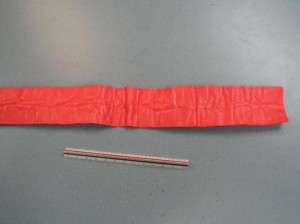Your thumb is a vital part of your hand particularly for grasping and holding objects as well as for daily tasks. If an individual suffers from a sprained thumb, it is best described as an injury to the proper alignment of the thumb. The ligaments are soft structures that connect two bones to form a stable joint. Once the main ligament located at the base of the thumb is injured, it will affect the ability to hold and grasp objects.
[youtube url=”http://www.youtube.com/watch?v=b7c_Bj6AfTY”]Causes of a sprained thumb
Once an individual falls, the natural move is to outstretch the arms in order to minimize the impact upon hitting the floor. The manner on how the individual lands on the hand can either tear or stretch the ulnar collateral ligament.
Sprained thumb symptoms
A thumb that is sprained will weaken the ability to hold or grasp items between the thumb and index finger. Pain might be present or not and other symptoms include tenderness, bruising and swelling.
It is still best to consult a doctor in order to ensure that the injury will not lead to long-term pain, weakness and instability.
How a sprained thumb is diagnosed
When it comes to a sprained thumb, the ulnar collateral ligament of the thumb can be completely or partially torn. This is determined by your doctor by moving the thumb in different directions in order to test the stability of the thumb joints.
An X-ray is recommended to ensure that the bone is not broken. In some cases, a stress X-ray can reveal the joint while the doctor applies tension to the damaged ligament. In case the test causes pain, an anesthesia is administered to minimize pain. An X-ray of the normal thumb is also taken that will serve as a comparison to the damaged thumb.
Treatment for a sprained thumb
In case the ligament is only torn partially, the doctor will immobilize the thumb joint using a cast, bandage or splint until it heals. The pain and swelling can be minimized by applying an ice pack on the thumb two times in a day for 2-3 days right after the injury.

For the initial 3 weeks after the injury, it is best to wear a cast or splint at all times. After that period, it can be taken off to perform the strengthening exercises for the thumb. The splint must be worn after the exercises. This must continue for another 2-3 weeks until the tenderness and inflammation in the thumb have disappeared.
What to expect
If a sprained thumb is ignored hoping that it will heal on its own, the injured ligament is not properly diagnosed and treated, thus it can lead to chronic weakness, instability and eventually arthritis.
Once the sprain progresses into these complications, it would require surgery in order to restore the ligament utilizing tissue from another part of the upper arm.
